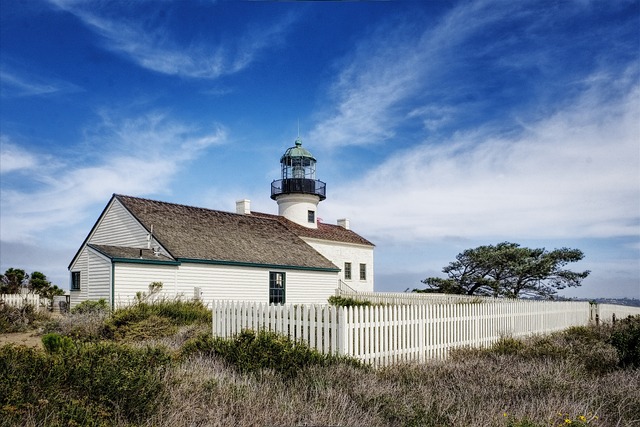New Bedford, MA residents increasingly seek sustainable solutions for their outdoor spaces, and eco-friendly fencing materials are at the forefront of this trend. This article explores the diverse options available in New Bedford, highlighting the benefits of switching to green fencing. From reduced environmental impact to enhanced local ecosystems and biodiversity, these fences offer not only aesthetic appeal but also long-term savings and durability. We compare traditional fencing with eco-friendly alternatives, providing a comprehensive guide for property owners considering this sustainable shift.
- Exploring Eco-Friendly Fencing Options in New Bedford
- Benefits of Sustainable Fence Materials for Your Property
- Traditional vs. Green Fencing: A Comparison Study
- How Eco-Fencing Boosts Local Ecosystems and Biodiversity
- Installation, Maintenance, and Longevity of Eco-Friendly Fences
Exploring Eco-Friendly Fencing Options in New Bedford
In New Bedford, MA, exploring eco-friendly fencing options is a growing trend among residents and businesses looking to reduce their environmental impact. The city’s commitment to sustainability offers a range of materials that not only enhance outdoor spaces but also contribute to a greener future. Among these, natural wood from sustainably managed forests, recycled plastic, and plant-based composites stand out as popular choices. Each option provides unique benefits, such as longevity, reduced maintenance, and aesthetic appeal, while minimizing the ecological footprint.
Local suppliers and manufacturers are at the forefront of this movement, offering innovative solutions tailored to the region’s climate and landscape. From traditional wooden planks to modern, mold-resistant composite panels, these eco-friendly fencing materials provide an alternative to conventional options. By choosing sustainable fencing, New Bedford residents can enjoy the privacy and security of their outdoor spaces while contributing to the city’s overall environmental stewardship goals.
Benefits of Sustainable Fence Materials for Your Property
Incorporating eco-friendly fencing materials into your New Bedford, MA property offers a multitude of advantages. Firstly, these sustainable options reduce environmental impact by minimizing waste and promoting recycling, contributing to a greener community. Secondly, many eco-friendly fences are made from renewable resources like bamboo or recycled plastic, ensuring long-term durability without depleting natural resources.
Moreover, these materials often provide exceptional aesthetic appeal, enhancing your property’s curb appeal. They can be tailored to various styles and designs, seamlessly integrating with surrounding landscapes. Additionally, sustainable fences offer functional benefits such as privacy, noise reduction, and security, all while promoting a healthier and more eco-conscious lifestyle.
Traditional vs. Green Fencing: A Comparison Study
In New Bedford, MA, the shift towards eco-friendly fencing materials is not just a trend but a conscious decision to minimize environmental impact and promote sustainability. Traditional fencing options often rely on non-renewable resources like wood treated with chemicals or metal, leading to deforestation, pollution, and long-term maintenance issues. In contrast, green fencing materials offer a viable alternative by utilizing renewable resources such as bamboo, recycled plastic, or organic composites.
These innovative alternatives not only reduce carbon footprint but also provide aesthetic appeal and longer lifespan with proper care. Unlike traditional fences that may require frequent painting or replacement, eco-friendly options can blend seamlessly with natural landscapes, creating a harmonious environment while offering practical benefits like reduced noise pollution and improved energy efficiency through better temperature regulation.
How Eco-Fencing Boosts Local Ecosystems and Biodiversity
In the heart of New Bedford, MA, the adoption of eco-friendly fencing materials isn’t just an aesthetic choice; it’s a powerful tool for boosting local ecosystems and biodiversity. These sustainable alternatives, made from renewable resources like wood chips, bamboo, or recycled plastic, provide habitats for a variety of wildlife, from birds and insects to small mammals. Unlike traditional fences that can fragment habitats and limit animal movement, eco-fences seamlessly integrate into the natural landscape, fostering connectivity and diversity.
Moreover, eco-friendly fencing helps filter pollutants and absorbs carbon dioxide, contributing to the overall health of local ecosystems. The organic materials naturally break down over time, enriching the soil and nourishing surrounding plants, while recycled plastic fences reduce landfill waste and the need for new resource extraction. This holistic approach to landscaping not only beautifies New Bedford’s urban spaces but also strengthens the resilience and sustainability of its natural environment.
Installation, Maintenance, and Longevity of Eco-Friendly Fences
Eco-friendly fences not only contribute to a greener environment but also require minimal maintenance, making them an attractive option for homeowners and local authorities in New Bedford. Installation is straightforward, often using simple tools and techniques that can be mastered by most do-it-yourself enthusiasts. The materials themselves are designed to withstand harsh weather conditions, from intense sunlight and rain to wind and snow, ensuring they maintain their integrity over time.
Compared to traditional fences, eco-friendly options offer significant longevity, reducing the need for frequent replacements or repairs. Regular cleaning with mild soap and water is often all that’s necessary to keep them looking new. This low-maintenance nature not only saves on costs but also reduces the environmental footprint associated with manufacturing and disposal of fencing materials.
